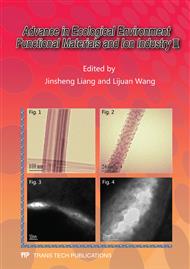p.110
p.115
p.119
p.123
p.128
p.133
p.139
p.143
p.148
Research of Electric Properties of Monocrystalline Silicon Solar Battery
Abstract:
With crystalline silicon solar battery industry is developing rapidly, there are scientific significance and application value for guiding the industrial production using analysis of the electrical properties of crystalline silicon solar battery. This paper studies that the main parameters of monocrystalline crystal silicon solar battery: the junction depth and superficial concentrations influence on electrical characteristics of monocrystalline silicon solar battery. The result shows that for maximum efficiency, it is bound to get the largest possible open circuit voltage, short circuit current and fill factor of the product, therefore, it is necessary to control the junction depth and doping parameters. If the junction depth is constant, with the increased superficial doping concentration of monocrystalline silicon solar battery, the photoelectric conversion efficiency of the battery increases slowly at first and then rapidly decreases, and the deeper the junction depth is, the more obvious trend of the photoelectric conversion efficiency is. If the superficial doping concentration is constant, the photoelectric conversion efficiency of the battery is increased with the reductive junction depth of surface of monocrystalline silicon solar battery.
Info:
Periodical:
Pages:
128-132
Citation:
Online since:
January 2012
Authors:
Price:
Сopyright:
© 2012 Trans Tech Publications Ltd. All Rights Reserved
Share:
Citation:



